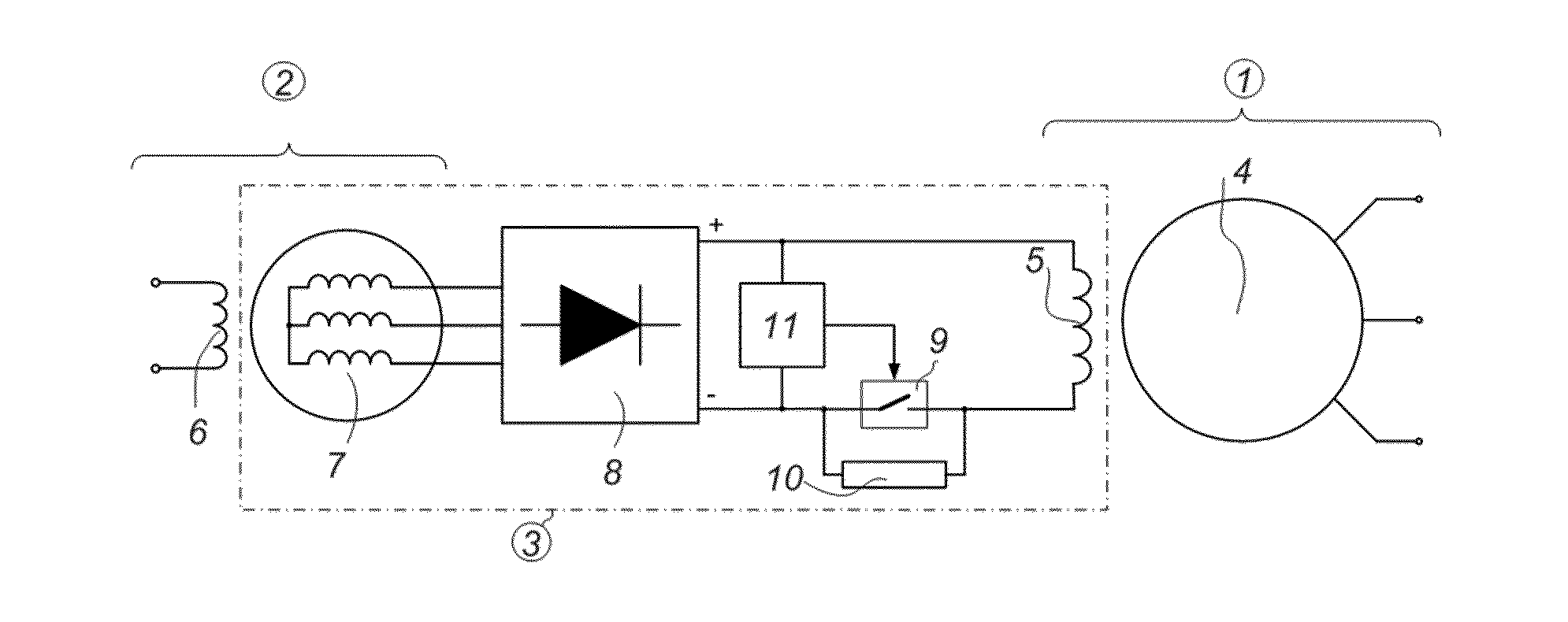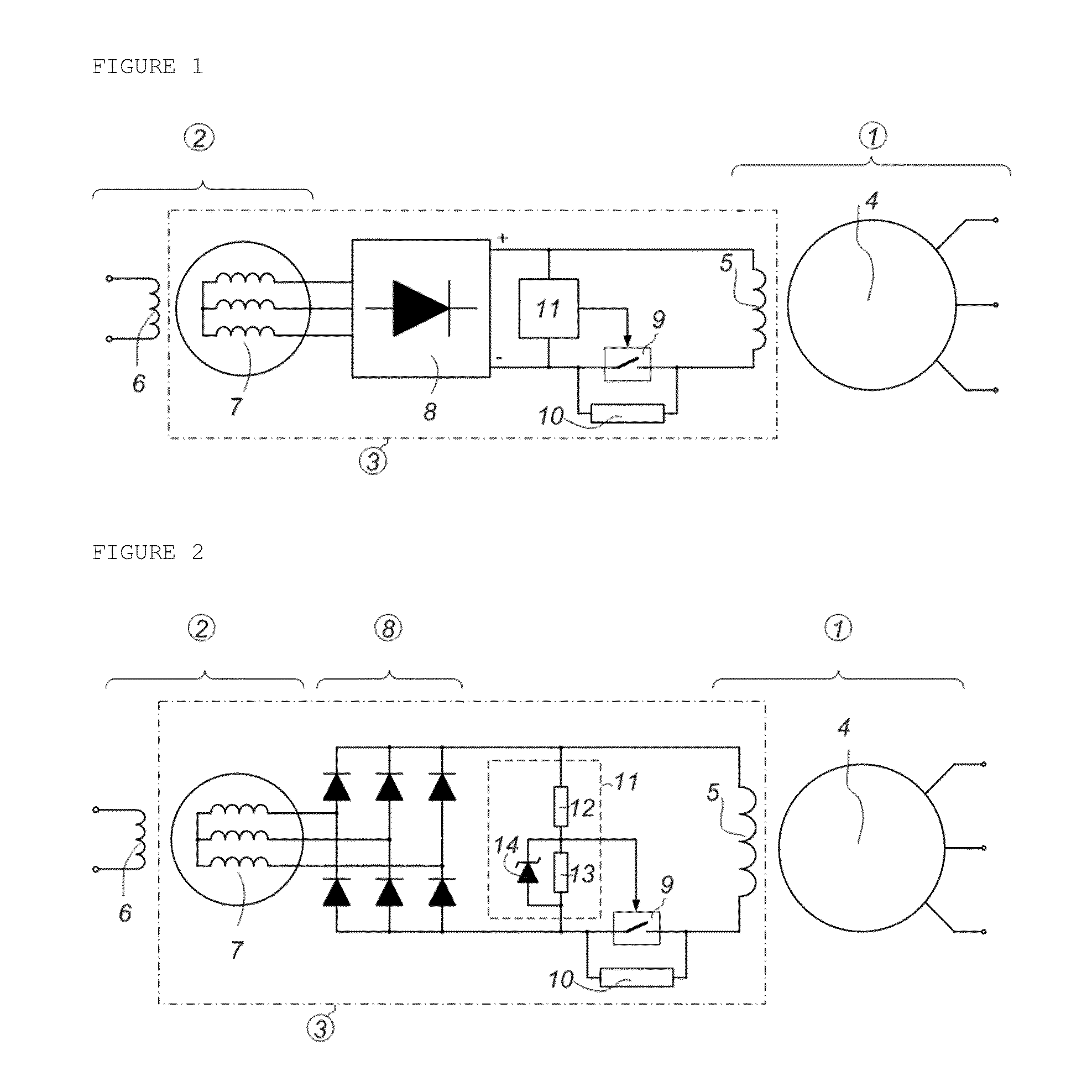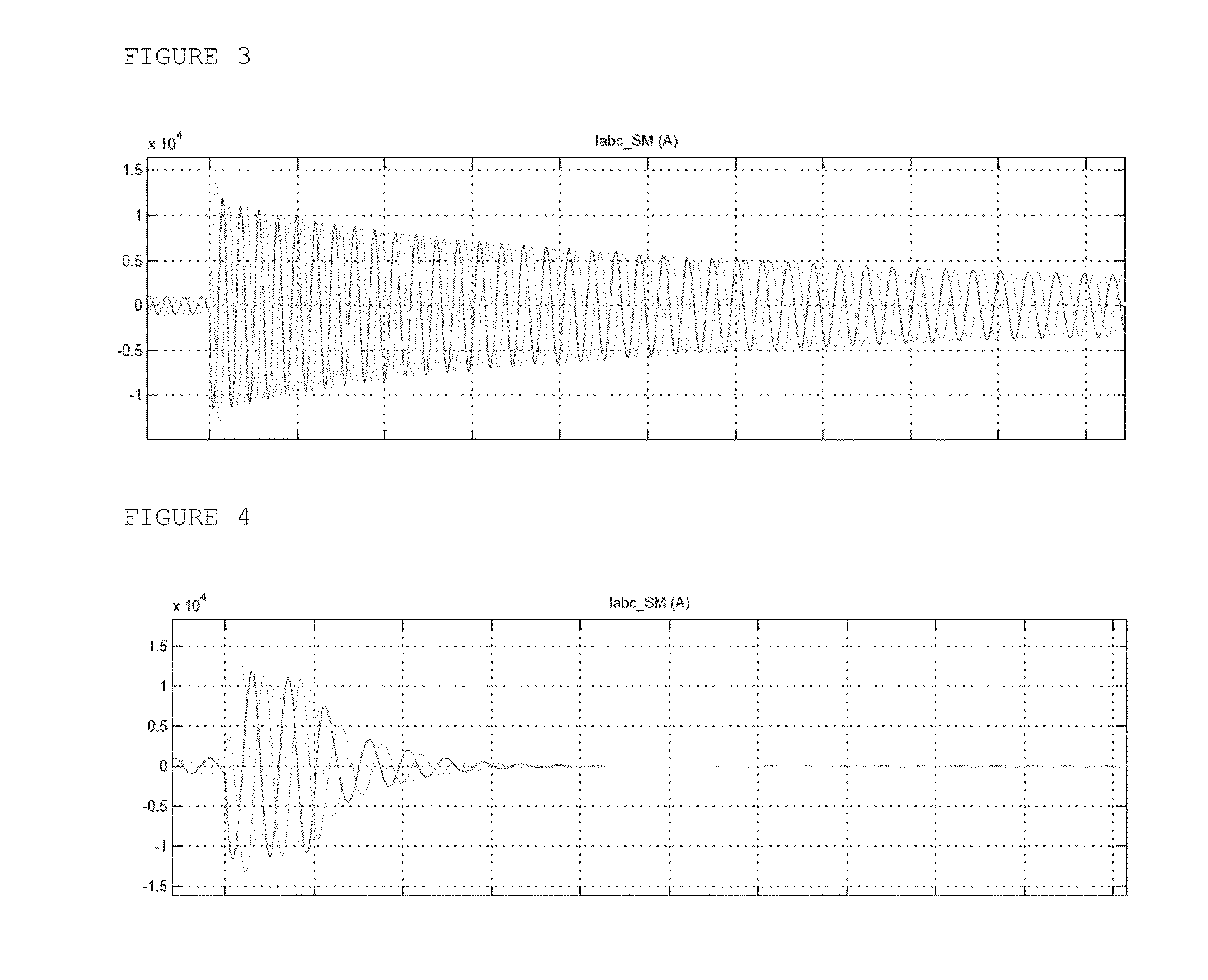Rapid de-excitation system for synchronous machines with indirect excitation
- Summary
- Abstract
- Description
- Claims
- Application Information
AI Technical Summary
Benefits of technology
Problems solved by technology
Method used
Image
Examples
Embodiment Construction
The system object of the present invention allows a synchronous indirect excitation machine to behave for deexcitation purposes similarly to a direct excitation machine, but maintaining the advantages of brushless excitation.
The rapid deexcitation system for synchronous machines with indirect excitation by means of an excitation machine and rotating rectifier bridge comprises:a deexcitation impedance, preferably a resistor, connected between the field winding of the synchronous machine and the rotating rectifier bridge;a controller, preferably a semiconductor-type controller, connected in parallel with the deexcitation impedance;a control circuit of the controller configured to:keep the controller closed such that the rotating rectifier bridge directly feeds the field winding of the synchronous machine during normal operation of the synchronous machine;deexcite the synchronous machine (in the event of a short circuit or in the event of the disconnection of the synchronous machine fr...
PUM
 Login to View More
Login to View More Abstract
Description
Claims
Application Information
 Login to View More
Login to View More - R&D
- Intellectual Property
- Life Sciences
- Materials
- Tech Scout
- Unparalleled Data Quality
- Higher Quality Content
- 60% Fewer Hallucinations
Browse by: Latest US Patents, China's latest patents, Technical Efficacy Thesaurus, Application Domain, Technology Topic, Popular Technical Reports.
© 2025 PatSnap. All rights reserved.Legal|Privacy policy|Modern Slavery Act Transparency Statement|Sitemap|About US| Contact US: help@patsnap.com



